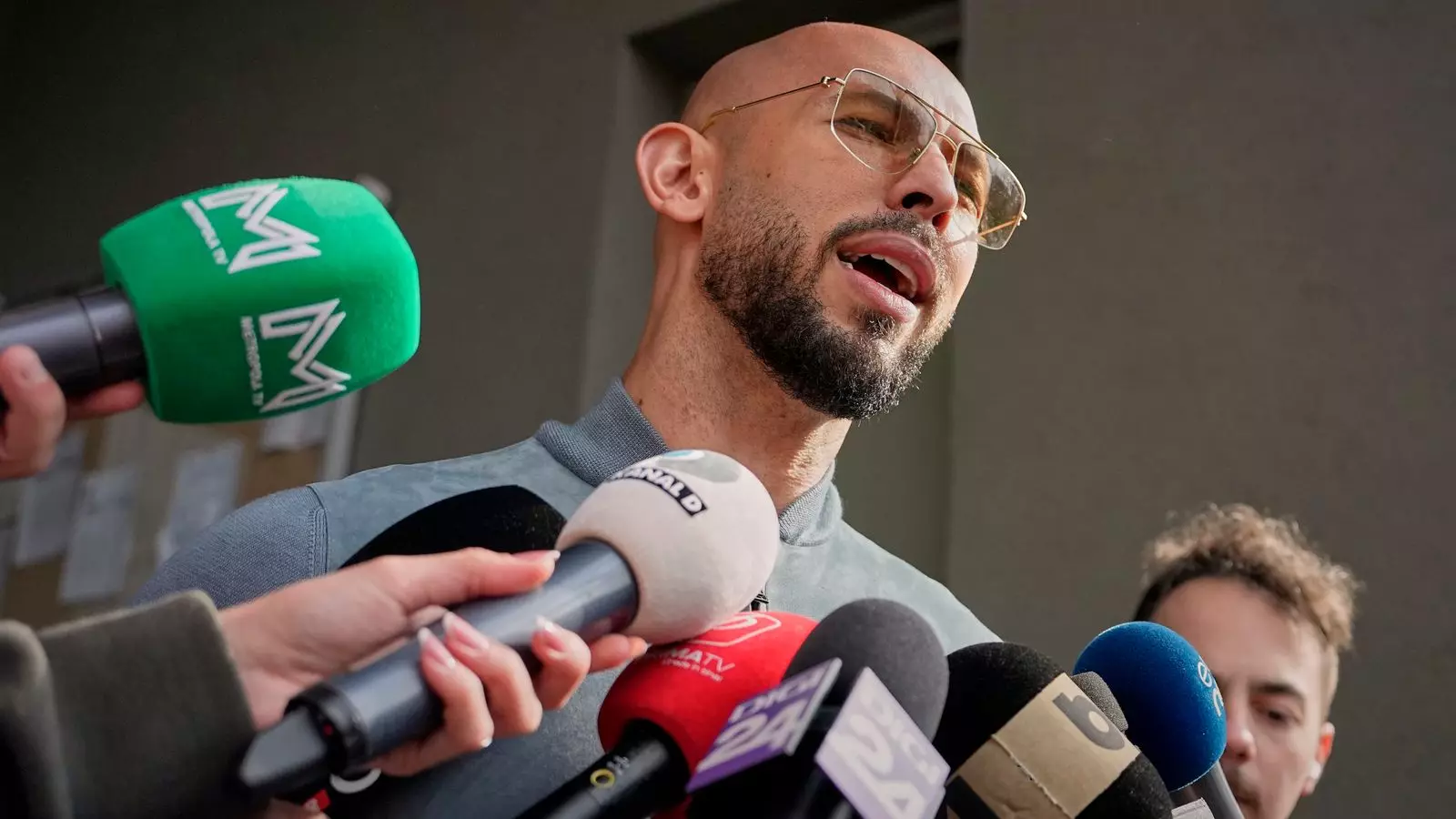In an alarming report by the NASUWT teaching union, a concerning pattern has emerged regarding the influence of social media on students in the UK. With over 5,800 teachers surveyed, a staggering 59% of educators believe that platforms like TikTok and Instagram have incited a substantial decline in the conduct of their students. This trend underscores a potent mix of ignorance and entitlement that has seeped into schools, where young minds are increasingly swayed by charismatic influencers whose messages can often be harmful. The issue at hand is beyond mere behavioral decline; it represents a worrying cultural shift that educators are forced to confront daily.
The Unspoken Influence of Toxic Figures
Notably, the name Andrew Tate has surfaced multiple times in discussions among educators regarding the factors contributing to this troubling trend. The cultural phenomenon of Tate exemplifies a dangerous intersection between male entitlement, toxic masculinity, and the perpetuation of misogyny. Teachers have noted that young boys, as young as ten, feel emboldened to express disdain towards their female peers, asserting their “masculinity” through derogatory treatment. This not only hinders the learning environment but also potentially shapes a generation that sees women not as equals, but as lesser beings. Such a narrative is a betrayal of the progress we should be striving for in the field of education, especially in the 21st century.
The Role of Institutions in Mitigating Extremism
This disturbing trend isn’t being overlooked by government officials. Prime Minister Sir Keir Starmer, in a recent meeting at Downing Street, sought to engage in conversations aimed at tackling the “whirlpool of hatred and misogyny” among young boys. The participation of creators of programs like Netflix’s “Adolescence,” which probes into incel culture, reflects a recognition that these issues deserve more than a cursory glance. It’s a reminder that misogyny is not merely a nuisance; it has profound societal implications that can lead to tragic outcomes if unaddressed.
The rise in incidences of derogatory language and behavior in schools necessitates more than lip service; schools must work collaboratively with local and national organizations to create a responsive system that safeguards students from the allure of far-right ideologies and extremist viewpoints. It is critical that the teaching community does not bear this burden alone.
Voices from the Education Frontlines
Patrick Roach, general secretary of the NASUWT, rightly emphasizes that educators require more support in navigating these perilous waters. He warns that ignoring the influences of far-right populism poses a grave risk to young minds. It is not enough for school officials to label TikTok and Snapchat merely as distractions; educators must be vigilant about the messages that seep through these platforms and, ultimately, into their classrooms. The influence of toxic ideologies speaks to a larger societal malady that requires collective reckoning.
Furthermore, conservative leaders such as Kemi Badenoch have shared personal stories of loss due to the internet’s toxic environment. Her tragic recounting of a young cousin’s suicide after being ensnared in harmful online culture illustrates a chilling reality—the risk posed by unchecked social media engagement is not confined to the schoolyard; it has escalated to life-and-death stakes.
Rethinking Policy and Responsibility
In light of these alarming statistics and experiences, there is a growing consensus on the need for stricter regulations, such as banning mobile phones in schools. But instead of merely curtailing access, we must engage young people in conversations about media literacy and critical thinking. Education should foster a culture where young people are equipped to decipher the harmful influences they might encounter online. It’s imperative that we challenge the narratives being pushed by figures like Andrew Tate and provide young individuals with the tools to question instead of blindly following.
As we embark on this urgent conversation, the responsibility doesn’t merely fall on educators; it is a collective call to action involving parents, policymakers, and social influencers themselves. We must dismantle the toxic structures that allow misogyny to thrive unchecked in our classrooms and society at large. What remains is a burning question: Are we prepared to galvanize meaningful change before it’s too late?


Leave a Reply